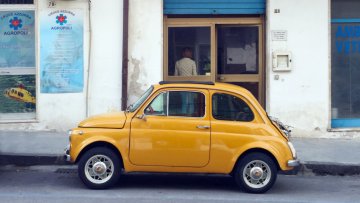With over a million inhabitants, it's one of northern Europe's largest cities, but Copenhagen has managed to remain very pedestrian-friendly, offering a rich and varied street life best experienced on foot. Most tourist sites are conveniently located in the core of the city, where Stroget - a car-free street anchoring the downtown area - runs from Nyhavn Harbor to the storied Tivoli Gardens, but getting around more quickly is easily accomplished via bus, Metro, and S-tog, a suburban rail system. The same tickets are used throughout all three, and those in town for more than a day or two should look into purchasing a City Pass, which for 190 DKK will allow you to travel through zones 1-4, including the airport. A seven-day Flexicard for 225 DKK will get you to farther flung sites like Frederiksborg Castle, Louisiana, and Roskilde in addition to all the city sites.
Cars are neither the cheapest nor the most convenient way to get around Copenhagen, but if you do need to rent a car, you will need to be over the age of twenty and in possession of a valid driver's license. Traffic in Denmark keeps to the right, and speed limits are between 110 to 130 kilometers per hour. Be sure to keep your eyes peeled for ever-present cyclists.
Scandinavians are famous for choosing cycling as their main form of transport, and you're more likely to feel at home here if you're also whizzing by on your own two wheels. Luckily Copenhagen has a state-of-the-art bikeshare system called Bycyklen, whose bikes are equipped with GPS, motorized gears, and puncture-proof tires. These can be rented for 25 DKK per hour from a number of docking stations across the city - the largest selection will be at City Hall Square and the Central Station - but remember to bring a credit card to book via the touchscreen on each bike.
The Metro line is limited, but sleek and convenient, with only three main consecutive stations that visitors need to know: Norreport, Kongens Nytorv, and Christianshavn. Each of these is surrounded by hotels and close to major tourist sights. Trains run at about 5-minute intervals throughout the day, and at 15- to 20-minute intervals in the evenings. Trains also run to and from the airport with a trip from the central station of Norreport taking about fifteen minutes.
All tourist sites within the city are served by Copenhagen's prompt and extensive bus system. Many bus drivers speak English, and are patient and friendly with tourists, but locals should also be more than willing to help with directions. Buses on the "A" line are particularly useful to sightseers, as they are smaller and slower, designed specifically to navigate the older, more narrow streets of the old town.
Taxis are numerous, easy to find, and very expensive. If the yellow "Taxa" light on the top of the car is lit, the taxi is available to be flagged down. Because of the price it's best to leave these for late night journeys where you need to travel door-to-door. Fares start at 37 to 50 DKK plus anywhere from 15 to 19 DKK per kilometer depending on the time of day, and all taxis accept credit cards.
